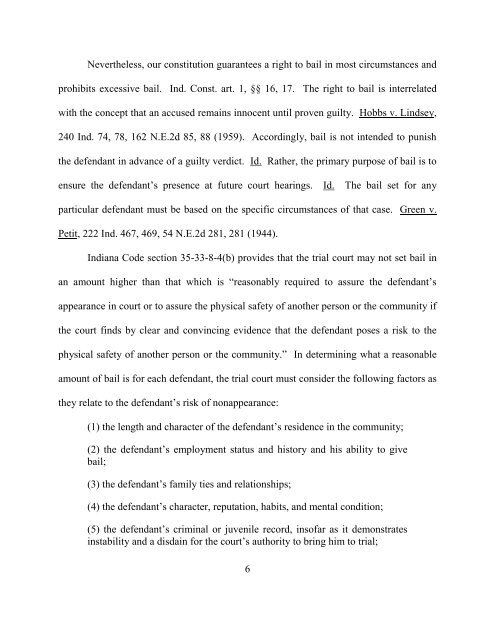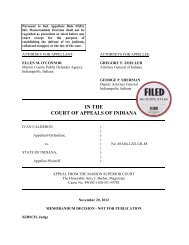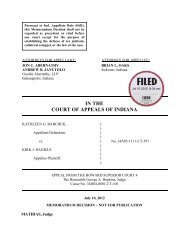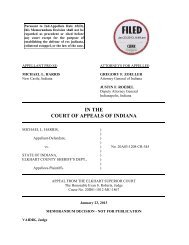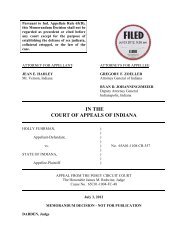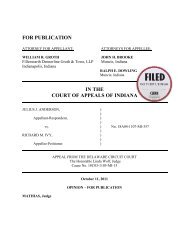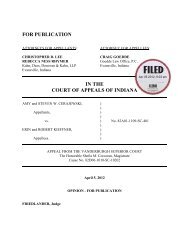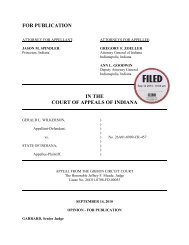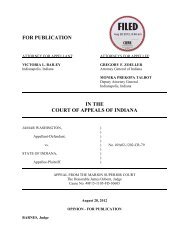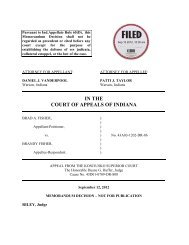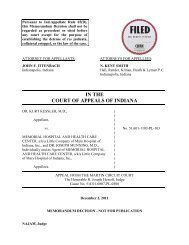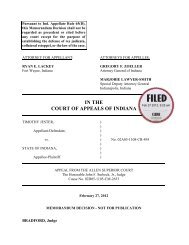Mickell Biggs v. State of Indiana (NFP)
Mickell Biggs v. State of Indiana (NFP)
Mickell Biggs v. State of Indiana (NFP)
You also want an ePaper? Increase the reach of your titles
YUMPU automatically turns print PDFs into web optimized ePapers that Google loves.
Nevertheless, our constitution guarantees a right to bail in most circumstances and<br />
prohibits excessive bail. Ind. Const. art. 1, §§ 16, 17. The right to bail is interrelated<br />
with the concept that an accused remains innocent until proven guilty. Hobbs v. Lindsey,<br />
240 Ind. 74, 78, 162 N.E.2d 85, 88 (1959). Accordingly, bail is not intended to punish<br />
the defendant in advance <strong>of</strong> a guilty verdict. Id. Rather, the primary purpose <strong>of</strong> bail is to<br />
ensure the defendant’s presence at future court hearings. Id. The bail set for any<br />
particular defendant must be based on the specific circumstances <strong>of</strong> that case. Green v.<br />
Petit, 222 Ind. 467, 469, 54 N.E.2d 281, 281 (1944).<br />
<strong>Indiana</strong> Code section 35-33-8-4(b) provides that the trial court may not set bail in<br />
an amount higher than that which is “reasonably required to assure the defendant’s<br />
appearance in court or to assure the physical safety <strong>of</strong> another person or the community if<br />
the court finds by clear and convincing evidence that the defendant poses a risk to the<br />
physical safety <strong>of</strong> another person or the community.” In determining what a reasonable<br />
amount <strong>of</strong> bail is for each defendant, the trial court must consider the following factors as<br />
they relate to the defendant’s risk <strong>of</strong> nonappearance:<br />
(1) the length and character <strong>of</strong> the defendant’s residence in the community;<br />
(2) the defendant’s employment status and history and his ability to give<br />
bail;<br />
(3) the defendant’s family ties and relationships;<br />
(4) the defendant’s character, reputation, habits, and mental condition;<br />
(5) the defendant’s criminal or juvenile record, ins<strong>of</strong>ar as it demonstrates<br />
instability and a disdain for the court’s authority to bring him to trial;<br />
6


